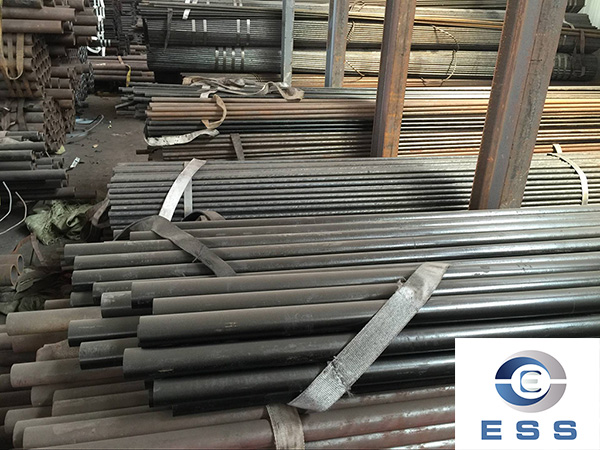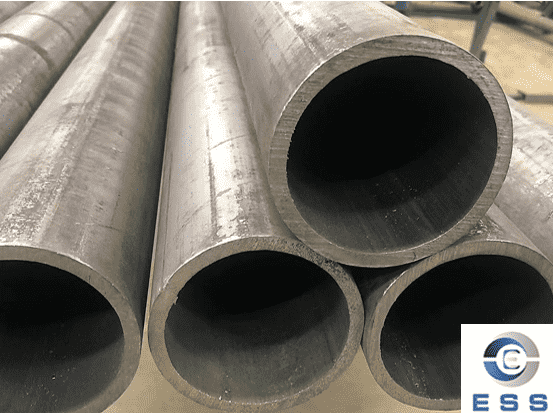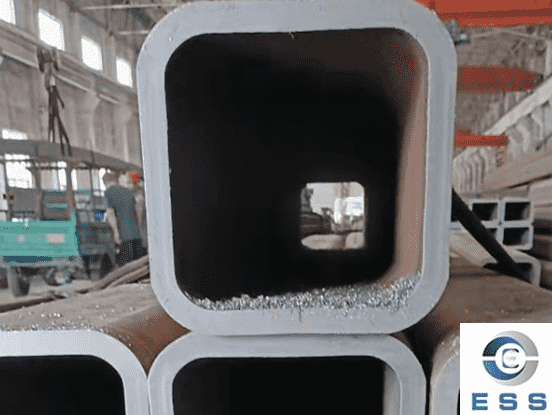What is the function of mild steel tube raw materials?
Steel is one of the most commonly used materials in construction and manufacturing. One of the common steels is "regular carbon steel" or "mild steel", also known as "mild steel". Due to its excellent processability, weldability and relatively low cost, mild steel has become an indispensable choice for many industries. Whether you're in home repair, construction, or manufacturing, it's critical to know how to properly use and maintain mild steel. This article provides you with comprehensive information about mild steel, gain an in-depth understanding of the world of mild steel, explore its potential and advantages, and add more possibilities to your projects and work.

What is mild steel?
Mild steel, also known as mild steel or regular carbon steel, is a steel with a relatively low carbon content (usually less than 0.25%). It is the most commonly used form of steel due to its affordability, versatility, and ease of fabrication. Mild steel has good mechanical properties such as strength and ductility, making it suitable for a variety of applications. It is widely used in construction, manufacturing, automotive and other industries for structural, mechanical, automotive parts and general manufacturing purposes. Mild steel's low carbon content contributes to its ductility and weldability, making it easy to shape, shape and weld. However, low carbon steel may have lower hardness and wear resistance than high carbon steel. Its corrosion resistance can be improved with additional finishes or coatings.
Mild steel composition
Mild steel or mild steel pipe is usually composed of:
– Iron (Fe): The main component of mild steel, usually present in high percentages.
– Carbon (C): Mild steel has a very low carbon content, usually between 0.05% and 0.25%. The low carbon content contributes to its ductility and ease of fabrication.
– Manganese (Mn): Manganese is often added to mild steel to enhance its strength and improve its hardenability.
– Silicon (Si): Silicon is present in small amounts in mild steel and helps improve its strength and deoxidation properties.
– Sulfur (S): Sulfur is usually present in mild steel in trace amounts. Its presence improves workability, but excessive sulfur content can negatively affect weldability and ductility.
– Phosphorus (P): Phosphorus is also present in trace amounts in mild steel. It adds strength and improves the corrosion resistance of steel, but too high a phosphorus content can make the steel brittle.
It is important to note that the exact composition of mild steel can vary depending on the manufacturing process and intended application. These are typical elements in mild steel, but their percentages and any other alloying elements may vary.
Properties of mild steel
Mild steel has a variety of properties that make it a popular choice for a variety of applications. Some key properties of mild steel include:
Strength: While not as strong as high carbon steel or alloy steel, mild steel still provides good strength for many applications. It provides adequate structural integrity and load-bearing capacity.
Ductility: Mild steel is highly ductile, which means it can be easily stretched or bent without breaking. This property allows for easy shaping, shaping and manufacturing processes such as rolling, bending and welding.
Weldability: Mild steel has excellent weldability and therefore can be easily joined using a variety of welding techniques including arc, MIG and TIG welding. It creates a strong and durable weld.
Machinability: Mild steel is relatively easy to machine due to its low carbon content. It can easily cut, drill, bore and open processing equipment, making it suitable for manufacturing processes.
Versatility: Mild steel is a versatile material that can be used in a wide range of applications. It can be easily adapted, manufactured and modified to meet specific requirements.
Cost-Effectiveness: Mild steel is one of the most affordable steel types, making it an economical choice for many projects and industries. It provides a good balance of performance and cost.
Corrosion resistance: Although mild steel is not as corrosion-resistant as stainless steel or other corrosion-resistant alloys, it can withstand mild atmospheric corrosion. Proper surface treatment, such as paint or coating, can enhance its corrosion resistance.
Electrical and thermal conductivity: Mild steel has moderate electrical and thermal conductivity, making it suitable for applications requiring these properties, such as electrical enclosures or heat transfer.
It is important to note that the specific properties of mild steel may vary depending on factors such as its composition, manufacturing process and heat treatment. These properties contribute to the widespread use of mild steel in construction, manufacturing, and various other industries.
Mild steel uses
What is mild steel used for? Mild steel is used in various applications in different industries due to its economy, versatility and mechanical properties. Some common uses of mild steel include:
1. Structure: Mild steel is widely used in construction for structural components such as beams, columns and steel bars. It provides strength and durability to buildings and infrastructure projects.
2. Automotive: Mild steel is used in the automotive industry to make a variety of components, including chassis, body panels, brackets and exhaust systems. Its strength, formability, and affordability make it a popular choice.
3. Manufacturing: Mild steel is widely used in the manufacturing industry for making machinery, equipment and tools. It is used in the production of gears, shafts, fasteners, pipes, valves and many other components.
4. Furniture and Appliances: Mild steel is often used to make furniture frames, appliances and kitchen utensils. It provides robustness and reliability to these products.
5. Pipes and Tubing: Mild steel pipes are commonly used in piping, fluid transfer and structural applications. They are used in natural gas pipelines, water supply networks and various industrial systems.
6. DIY and Home Projects: Mild steel is popular for DIY projects and home repairs due to its ease and availability. It can be used to build structures, create decorative items, or repair metal objects.
7. Agricultural Equipment: Mild steel is used to manufacture agricultural machinery, including tractors, plows, farm implements and storage tanks. It provides the necessary strength and elasticity required for agricultural applications.
8. Shipbuilding: Mild steel is used in shipbuilding to construct hulls, bulkheads and supporting structures. Its strength and weldability make it suitable for marine applications.
These are just a few examples of how mild steel can be used. Its versatility extends to many other industries and applications, making it a widely used material around the world.
Read more: Difference between mild steel pipe and carbon steel pipe













 Eastern Steel Manufacturing Co.,Ltd not only improve product production and sales services, but also provide additional value-added services. As long as you need, we can complete your specific needs together.
Eastern Steel Manufacturing Co.,Ltd not only improve product production and sales services, but also provide additional value-added services. As long as you need, we can complete your specific needs together.










